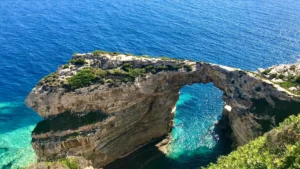One needs a glossary to describe the richness of that vast Archipelago called Indonesia, ranging from immense, lush and impressive to stunning, secluded and extraordinary. It has an abundance of natural and cultural resources to which the country attaches great importance. Hence, Indonesia’s tourism development, based on the Tourism Act, specifies that it should be sustainable and mindful of the environment and social-cultural and economic aspects of the local populations, while supporting the conservation of wildlife, nature and culture.
One of the biggest advantages of this policy and the enormous landmass – equalling that of all other ASEAN countries, save Myanmar – is that huge swathes of the country are sparsely visited. Most of the around 9 million tourists flock to the well known destinations of Java and Bali (Indonesia’s tourism heart), but out of the ordinary islands like Sumatra, Sulawesi, and Kalimantan are much lesser known and visited; let alone Maluka and Papua. Thus, despite a significant number of close to 10 million tourists annually, the country offers numerous opportunities for the uninitiated and old hands alike to experience encounters with unique natural and cultural attractions in little known locations.
Moreover, those remote attractions, made accessible by domestic airlines, allows for partnering with mundane soft adventure activities, such as cycling, snorkelling and elephant trekking. Although it’s easy to tick off the whole gamut of soft adventures (like white water rafting, caving, wild life safari, diving and surfing, next to the aforementioned) on one Indonesia’s main island Java, in this article a few appetizing off the beaten track prospects are unveiled as well.
Take snorkelling for example. It certainly would be a highlight for many to do so in the translucent waters of the laid-back ‘Tropical Islands Getaways’ of Lombok (Gili Terawangan, Gili Meno and Gili Air),
but a dream come true when done on the relatively isolated Banda Islands (Maluku), in pristine azure waters among colourful untouched coral gardens. ‘Sublime’ would be a fitting description.
How about trekking? Any distant places to go? Surely, even on Java. Indonesia’s first National Park (Ujung Kalon) is also the island’s most out-of-the-way places. It’s not often visited by tourists, despite housing the endangered one-horn Javan Rhino.
Not far enough? Sumatra then; either on stunning Samosir Island (in the north) or at Haruau Valley (in the West). Samosir is situated in the huge crater lake of Toba, one of the world’s awesome natural wonders (45km x 20km). The island, together with its surrounding areas is the heart of the Toba Batak culture. Once a backpackers’ paradise, nowadays it is visited by a handful of tourists only. A trek to the many traditional villages along its shoreline is recommended. It is also geared towards swimming, biking and motorcycling.







